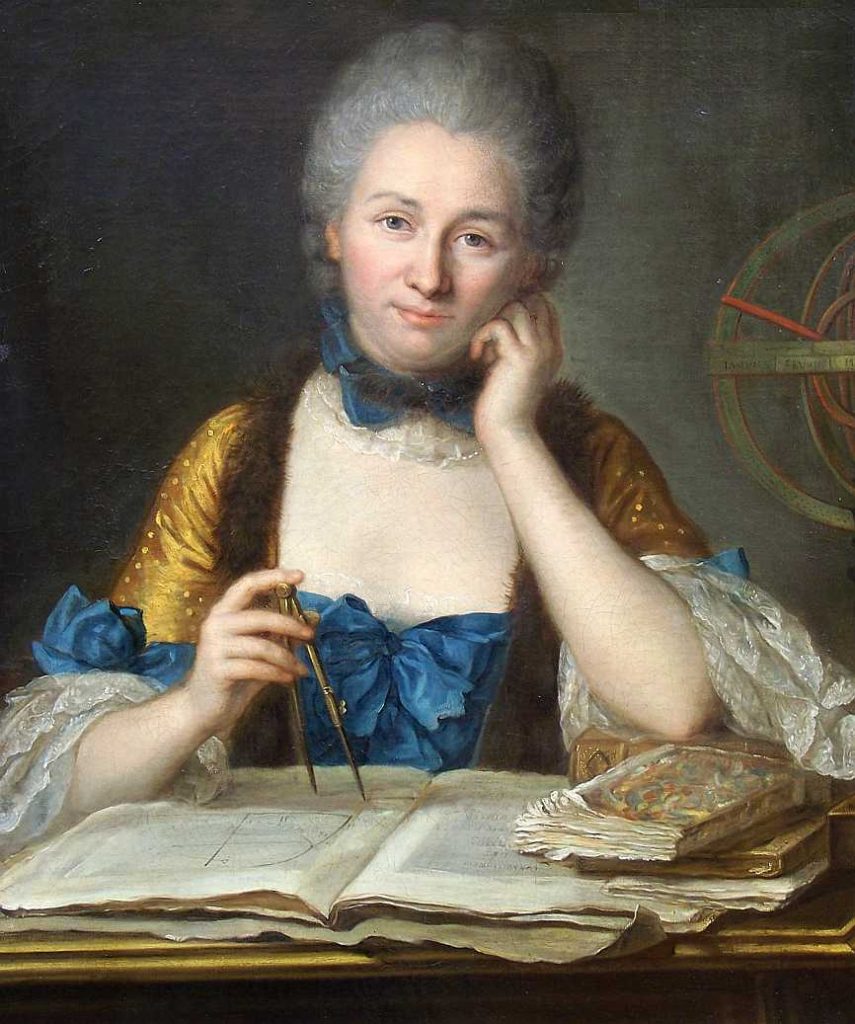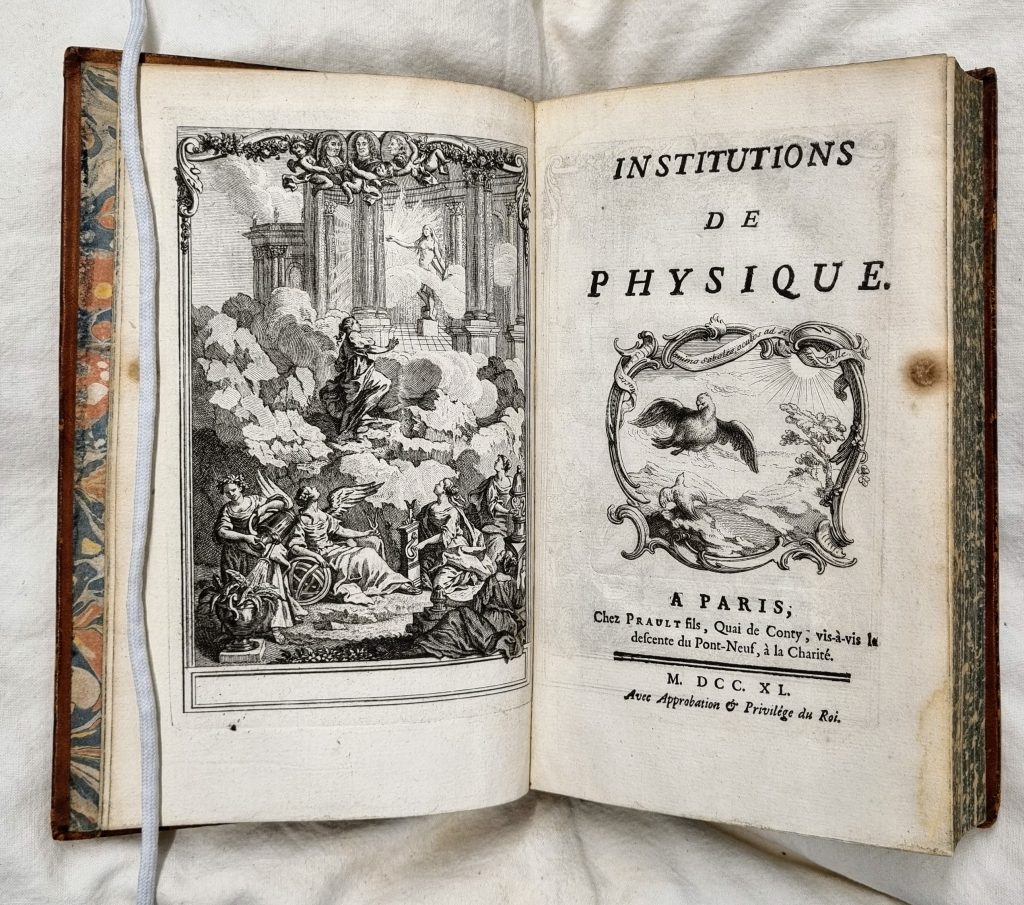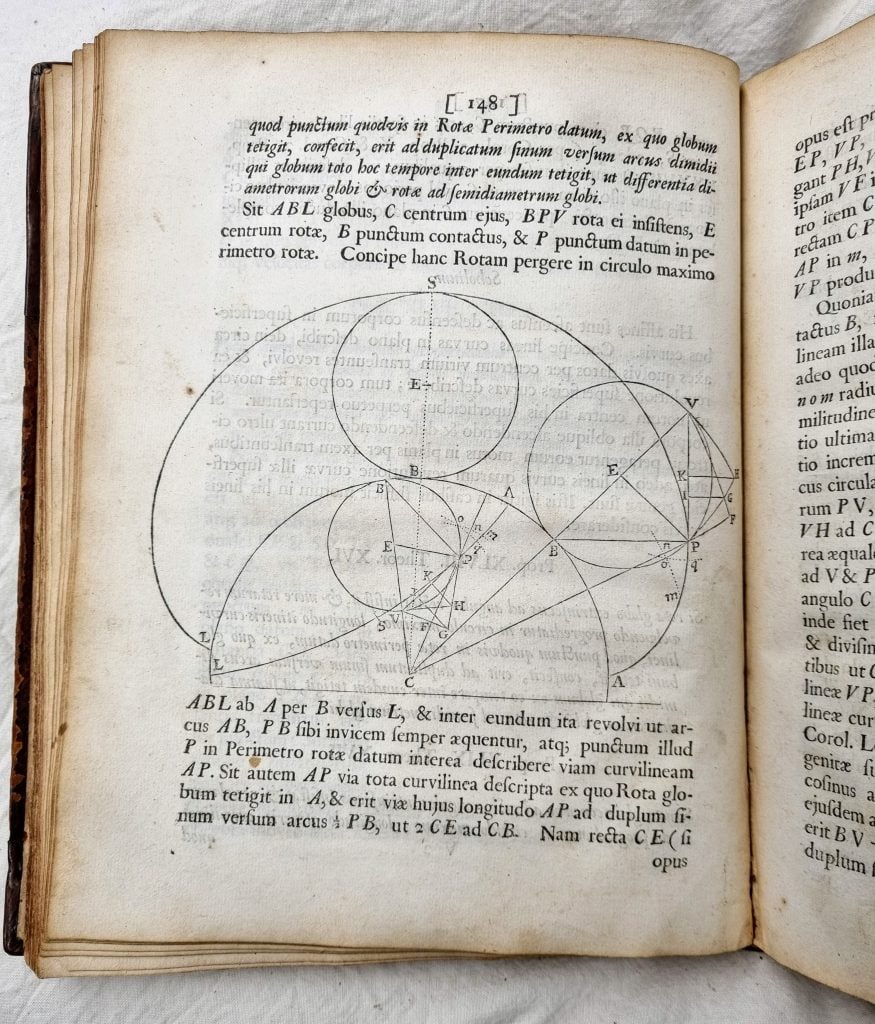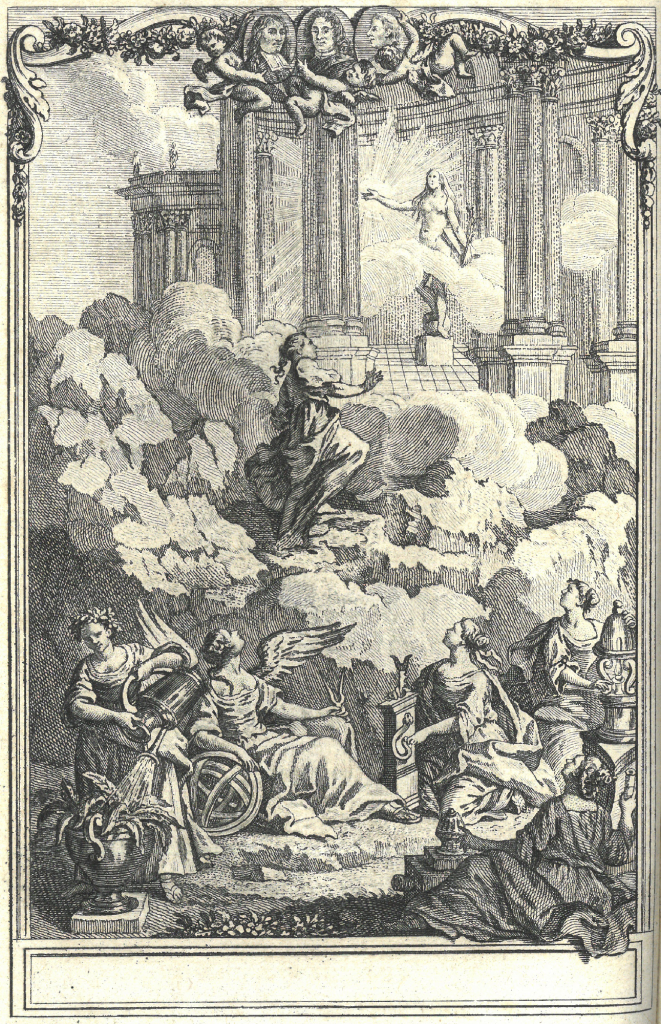“To be happy, one must rid oneself of prejudice, be virtuous, healthy, and have a capacity for enjoyment and for passion“ – Émilie du Châtelet, Discours sur le bonheur.
Le siècle des Lumières or the Age of Enlightenment heralded in a new period of intellectualism and philosophical exploration. In contrast to the core tenets of Renaissance classicism, which explored notions of humanism and the relationship to religion, the Age of Enlightenment pursued reason and logic through the exploration of secularism and agency.

Understandably, a flurry of scholarly inquiry took place during this period, producing a multitude of published scientific and philosophical works. State Library Victoria holds many key works from the period, as evidenced by the number of influential names adorning the spines of many 19th century bindings.
Celebrated Enlightenment figures such as Voltaire, Jean-Jacques Rousseau, Denis Diderot, Immanuel Kant, John Locke, and David Hume make up the bulk of the collection from this era. Until recently, it would have been almost impossible to find one name amongst these famous male figures in the State Collection.
Once lost to the annals of time, French intellectual, physicist, author, and mathematician, Émilie du Châtelet has emerged as a key figure of the Enlightenment movement. It is fitting then, that State Library Victoria’s Women Writers Fund (an initiative designed to redress the historical bias in the state collection) recently acquired a copy of du Châtelet’s critical text, Institutions de Physique [1740]. Thanks to the generosity of donor and supporter of the Library, Krystyna Campbell-Pretty AM, our Rare Books Collection has secured this important work from the Enlightenment.

At the end of the 18th century, du Châtelet’s contribution to the sciences was very much on the fringe of collective memory. The history books of the 19th and 20th centuries were almost entirely focused on her relationship with the French philosopher, Voltaire.
Émilie du Châtelet’s home in Cirey, France, became the centre for Newtonian science and a place for Voltaire, du Châtelet, and their contemporaries to explore Newton’s work. There is little doubt that du Châtelet was a profoundly important proponent of the Enlightenment, contributing to the large body of scholarly work in the areas of mathematics and philosophy. In a letter to King Frederick II of Prussia, Voltaire described du Châtelet as, “a great man whose only fault was being a woman.”
Her most recognised achievement is her translation of and commentary on Isaac Newton’s 1687 book, Philosophiæ naturalis principia mathematica, containing basic laws of physics. The translation, published posthumously in 1756, is still considered the standard French translation today. Unfortunately, State Library Victoria does not hold this translation but is lucky enough to hold the first edition of Newton’s critical work on mathematics (as below).
The first book on theoretical physics to be printed in France since 1671, Émilie du Châtelet’s Institution de physique reconciles the work of Isaac Newton, René Descartes, and Gottfried Wilhelm Leibniz, producing a physics and metaphysics textbook for her thirteen-year-old son. We see Descarte, Leibniz, and Newton illustrated in three cartouches at the top of the frontispiece. We also see a female figure ascending the clouds towards a figure of Aletheia, the Goddess of Truth. Below we see the Muses of the sciences, botany, astronomy, physics, medicine and chemistry.
Thanks to the Women Writers Fund, important works from key female thinkers like Émilie du Châtelet are being actively acquired for State Library Victoria’s Rare Book Collection.
The Women Writers Fund is a pioneering new initiative that seeks to redress the State Library Victoria’s collection by acquiring works by under-represented women writers. The work of the Women Writers Fund will give future generations access to more diverse and representative voices from different times, cultures, and disciplines.
If you would like to contribute to this ground-breaking initiative you can make a donation to support the Women Writers Fund.





Excellent, Daniel. You probably knw that “E=mc²: A Biography of the World’s Most Famous Equation “by David Bodanis (published in 2000) explores both Émilie du Châtelet and Voltaire’s relationship, AND (given the nature of the book) the physics that she researched and reported! The whole book is a superb explanation of the symbols in this (literally) powerful equation, and the human stories behind each symbol, and the research that the symbols represent!
Good morning John. Thank you for the feedback and book recommendation. I haven’t read his work but it sounds fascinating.